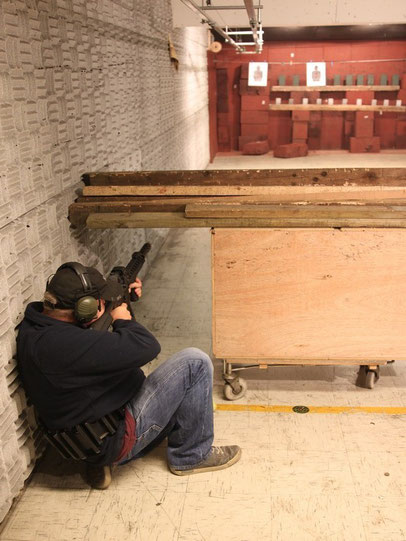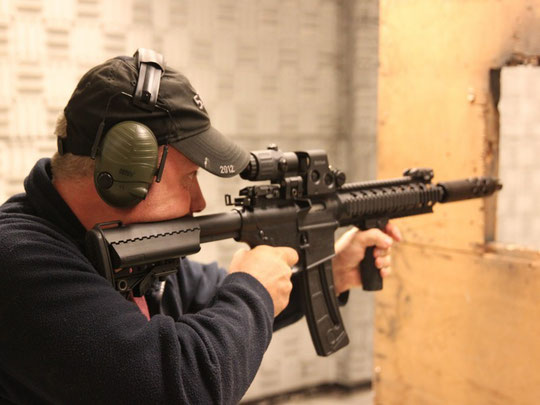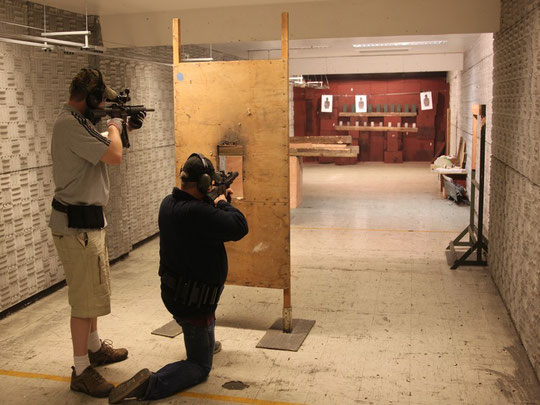Practical Rifle
For those that have not tried practical shooting yet, you're missing out on a lot of fast fire fun.
Mini Rifle was born around the time of the pistol ban in 1997, and like all practical shooting disciplines has a mandatory safety course. Practical shooting maintains the highest level of safety of any existing shooting discipline. Courses of fire are arranged so that the individual shooter must solve the problem presented to them. There may be several different options available in that targets are presented in differing positions, at different ranges and sometimes may or may not be seen from one point. It is a thinker’s sport, as every competitor is given the opportunity to go over the course of fire prior to shooting. In this time he must calculate and remember a shooting order to achieve the fastest time. He must also decide where magazine changes are to be made, or reloading is to be done, whilst observing the range safety procedures.

The guns are semi automatic .22 Rifles fitted with red dot sights/ scopes and lasers although any standard .22 Rifle is acceptable to use.
Most competitive shooters will add red dot sights to their gun to gain quicker target acquisition. Be assured, no matter what you have heard, they DO NOT guarantee that you hit the target. Shooters that haven't used them take great delight in telling everyone just how idiot proof they are. If you experience this, hand them your gun! Mini Rifle technology is still in its infancy. It has to be appreciated that for many months, probably years, shooters will continue to add, take away, modify and adjust their guns in order to gain the edge in proficiency. New inexperienced shooters should not be put off by lack of technical knowledge as ideas are swapped, discussed and developed between us all.

The beauty of Mini Rifle is that of its uniqueness in equality. Neither sex, age nor physique has any bearing on winning or losing. It's a game of gun-handling skill and mental agility. In truth, mental agility should be at the forefront. All shooting is conducted under the watchful eye of an experienced, qualified Range Officer (RO). On the range he is God. Nothing is done on a practical shooting range without the direct instruction of the RO. You will be asked to load and when finished to unload and your gun will be checked as empty before holstering or putting away. The rule of course-building is to present a practical shooting problem that will be shot in a practical and safe manner, hence the shooter will be forced into shooting positions that can sometimes be quite challenging. Standing, kneeling, sitting, prone, etc. We are limited only by our imagination and range safety constraints . Targets can also be moving as well as static. Generally targets can be shot freestyle, however, sometimes you may only be able to use your left hand side or right hand side, so adding to the complexity.
